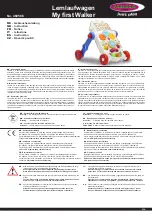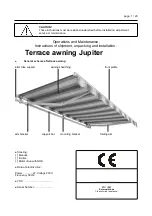
Initial Set Up
Use the following table as a guideline for setting up the Ripley for the first
time, and then go put a few hours riding on the bike. The numbers in the boxes
represent the rider’s weight. If you fall outside of these weights, contact Ibis
for different shock tuning set-ups.
e
z
i
S
e
m
a
r
F
d
a
o
l
e
r
P
t
h
g
i
L
)
s
n
r
u
t
o
w
t
s
u
n
i
m
(
d
a
o
l
e
r
P
y
r
o
t
c
a
F
)
l
e
v
a
r
t
-
d
i
m
(
d
a
o
l
e
r
P
y
v
a
e
H
)
s
n
r
u
t
o
w
t
s
u
l
p
(
l
l
a
m
S
a
r
t
x
E
.
s
b
l
0
2
1
-
0
0
1
.
s
b
l
0
4
1
-
0
2
1
.
s
b
l
0
6
1
-
0
4
1
l
l
a
m
S
.
s
b
l
0
4
1
-
0
2
1
.
s
b
l
0
6
1
-
0
4
1
.
s
b
l
0
8
1
-
0
6
1
m
u
i
d
e
M
.
s
b
l
0
6
1
-
0
4
1
.
s
b
l
0
8
1
-
0
6
1
.
s
b
l
0
0
2
-
0
8
1
e
g
r
a
L
.
s
b
l
0
8
1
-
0
6
1
.
s
b
l
0
0
2
-
0
8
1
.
s
b
l
0
2
2
-
0
0
2
e
g
r
a
L
a
r
t
x
E
.
s
b
l
0
0
2
-
0
8
1
.
s
b
l
0
2
2
-
0
0
2
.
s
b
l
0
4
2
-
0
2
2
Breaking In The Shock
Important:
The microcellular polyurethane springs in the Ripley shock will
actually take some time to break in and take a set. Four hours of riding will be
adequate to set the springs. Once the sag has been set after the break in
period, heavier and more aggressive riders should check the sag every couple of
months.
Measuring and Setting Sag
After your break-in period you’ll need
to adjust the sag. When you sit on the
bike, the shock should sag 0.3-0.4".
You can fine-tune the shock to provide
the appropriate sag.
To measure the sag, we recommend
using a tape measure to record the
unsagged distance between the rear
axle and the seat post bolt (see
photo). Now sit on the bike in your
riding position, bounce up and down a
couple times gently to make sure you
get an accurate reading, and have
someone and re-measure the distance.
The difference between the first and
second measurement is known as the
sag. To increase the sag, turn adjuster
screw counter-clockwise. Clockwise
adjustment decreases sag (duh).
Setting the Sag
5
Remov-
ing the
Upper
Stack
body (also known as the shock sleeve-part #2 pg. 9)
7—Push the supple spring out (pg 7). If you are replacing the supple spring
not the main spring, proceed to reassembly step 4.
8—Slide the boot off the frame.
9—Loosen the pinch bolt on the frame and remove the aluminum shock
body, taking care not to spread the frame apart.
Inspection
While the shock is apart, inspect the boot for cracks or holes, replace if
necessary. Also check the shock body for gouges or worn anodization. Small
longitudinal scratches along the shock inner bore will not affect performance,
large gouges will. Replace if necessary. Inspect the main shock spring and
supple spring for bulging or cracks, and inspect the inner sleeve for wear or
damage. Replace worn components.
Reassembly
1—Using a cloth, clean all the parts you are reassembling, including threads
in shock sleeve and adjuster. Do not use solvents, as they could attack
the spring material.
2—Slide shock sleeve into frame, tighten pinch bolt to 40 inch pounds.
3—Slide boot onto 1" frame stub.
4—Upper Spring:
a) Spread a small amount of lube on the inside
bore of the supple spring.
b) Insert inner sleeve into the supple spring
(you’ll need to push hard).
c) Remove excess lube from each end of inner
sleeve, use q-tip to remove from lube from
inside the supple spring.
Important: Be sure to remove excess grease or
Loctite will not adhere.
d) Lube the outside surface (the portion which
glides on the shock body) of the supple spring
liberally and reinsert.
e) Apply light grade thread lock (Loctite® Threadlocker 242) to first half
inch of central bolt threads, insert and tighten to 60 inch pounds.
Important: this is a critical measurement, and improper torque can
cause failure of the shock bolt.
8
Supple Spring






























